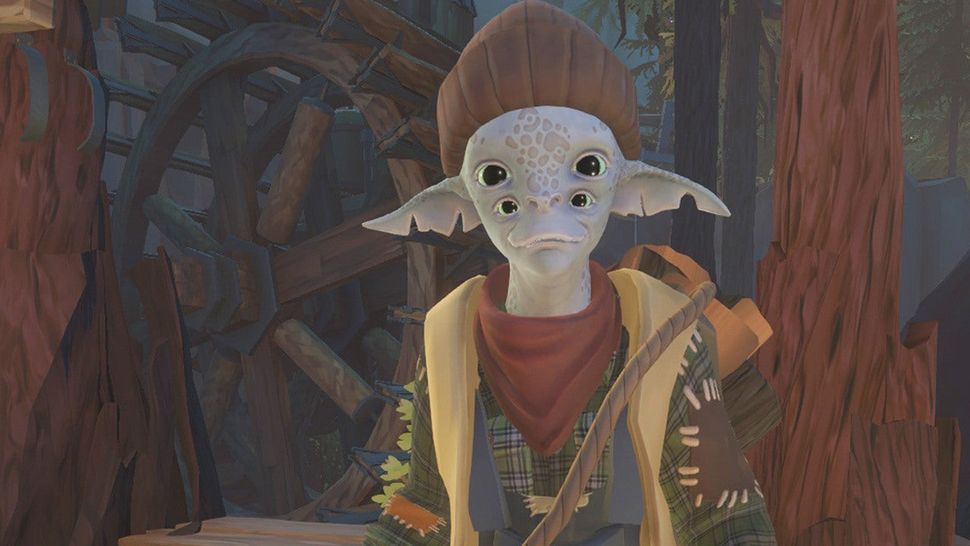
Fire a probe at the horizon and you'll see it arc around the planet, like Isaac Newton's cannon ball, according to the strength of the pull.

Each planet has its own gravity, moreover, so that a casual hop on one may risk launching you into space, where a slight fall on another might kill you. There's a pair of worlds that suck monstrous volumes of sand from one another, revealing sunken structures on one while burying them (and you, if you outstay your welcome) on the other. There's a planet whose crust falls apart beneath your feet as it is battered by lava boulders ejected by its own moon, exposing something rather terrifying at its core.

On one oceanic world, bottle-green cyclones launch whole islands briefly into the atmosphere, carrying the player along with them time it just right, and you might spring-board to a chunk of broken space station while investigating an old dockyard. Zoom from the celestial circles of the map screen and you'll discover that each planet is a scene of rapid upheaval. But it is also a place of violent change. It's a gleaming pocketwatch of a setting, many times smaller than the galaxies of Mass Effect, yet somehow far larger for the cleverness and tactility of its moving parts.

Their directions of travel and relative velocities are likewise marked on your helmet interface, so that you can match speeds with a button press and begin the fiddly process of landing, using the Apollo Lander-style fisheye camera on your ship's belly. It gives you Eisinga's benign and well-behaved cosmos, with nobbly, kilometre-wide planets strung to their orbits like rosary beads on your ship's map computer. There's a bit of both Eisinga and Alta in Outer Wilds - a beautifully mechanical, wistful outer spacey campfire yarn in which you scour a condensed, toybox solar system for the key to its salvation.
OUTER WILDS VESSEL PC
OUTER WILDS VESSEL FREE
In an age when afflictions such as headaches were often attributed to malign heavenly influences, Alta's prediction quickly caught on: edgier Dutch bards began composing doomsday songs, and other printers rushed to cash in on mounting public panic.Īmong those not swept away was the wool-comber and hobbyist astronomer Eise Eisinga, who allegedly chose this moment to begin work on a clockwork solar system, hoping to demonstrate the absurdity of such prophecies and free his countrymen of their superstitions. In May 1774, the Frisian clergyman Eelco Alta published a book on an impending planetary alignment, declaring this "a preparation or a commencement of the demolishing or destruction" of the universe. The world's oldest still-operational planetarium was created to disprove the end of the world. Explore a toy-box cosmos governed by violent forces in this mesmerising adventure.


 0 kommentar(er)
0 kommentar(er)
